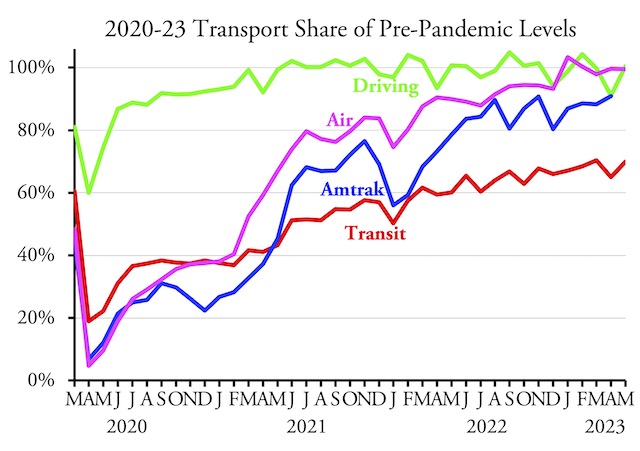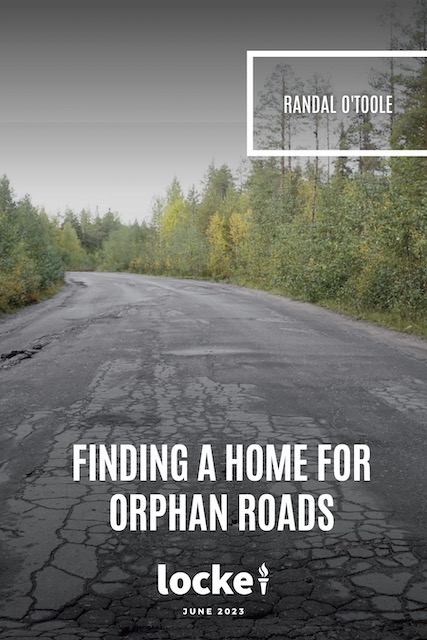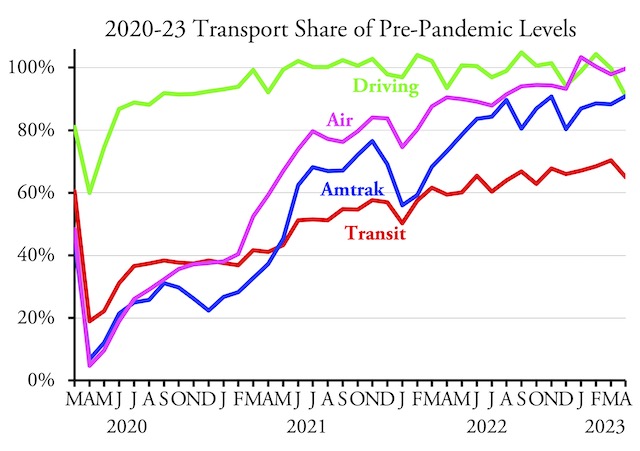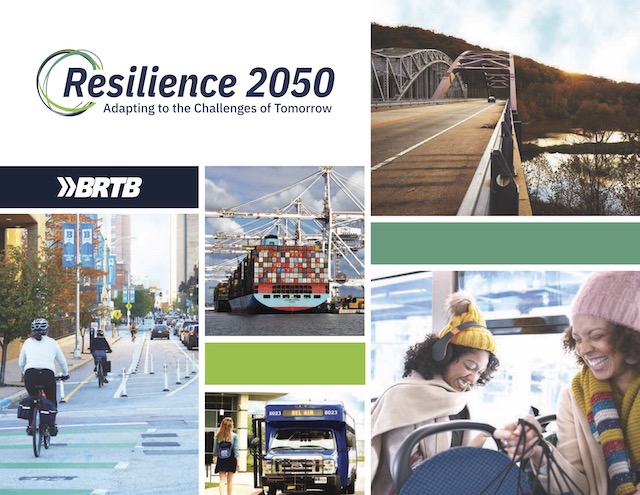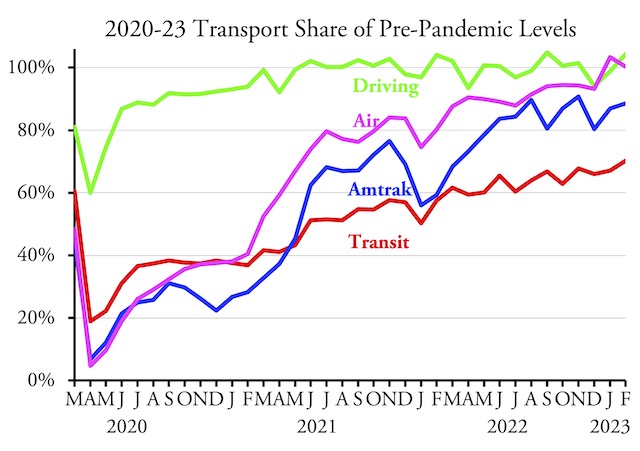“Should the U.S. repair crumbling roads and highways to enhance car-based mobility or replace them with new public transit infrastructure that re-orients U.S. commuting systems away from their current car dependence?” asks a paper recently published by the National Bureau of Economic Research. To answer the question, the paper compared accessibility via transit and driving in about 50 U.S. and 50 European cities. If transit made European cities more accessible, the researchers reasoned, then it would make sense for the U.S. to emphasize transit as well.
Should the United States attempt to build as much transit infrastructure as is found in Europe even if doing so reduces people’s access to jobs and other economic opportunities?
Instead, the researchers — two economists from Yale and one from UC San Diego — found that U.S. urbanites had far more access to their cities than Europeans did in theirs. Moreover, Europeans using cars had far more access to their cities than those who relied on transit. This shouldn’t be a surprise to those familiar with the research published by the University of Minnesota’s Accessibility Observatory, but it seems to have surprised the people doing this research. Continue reading


